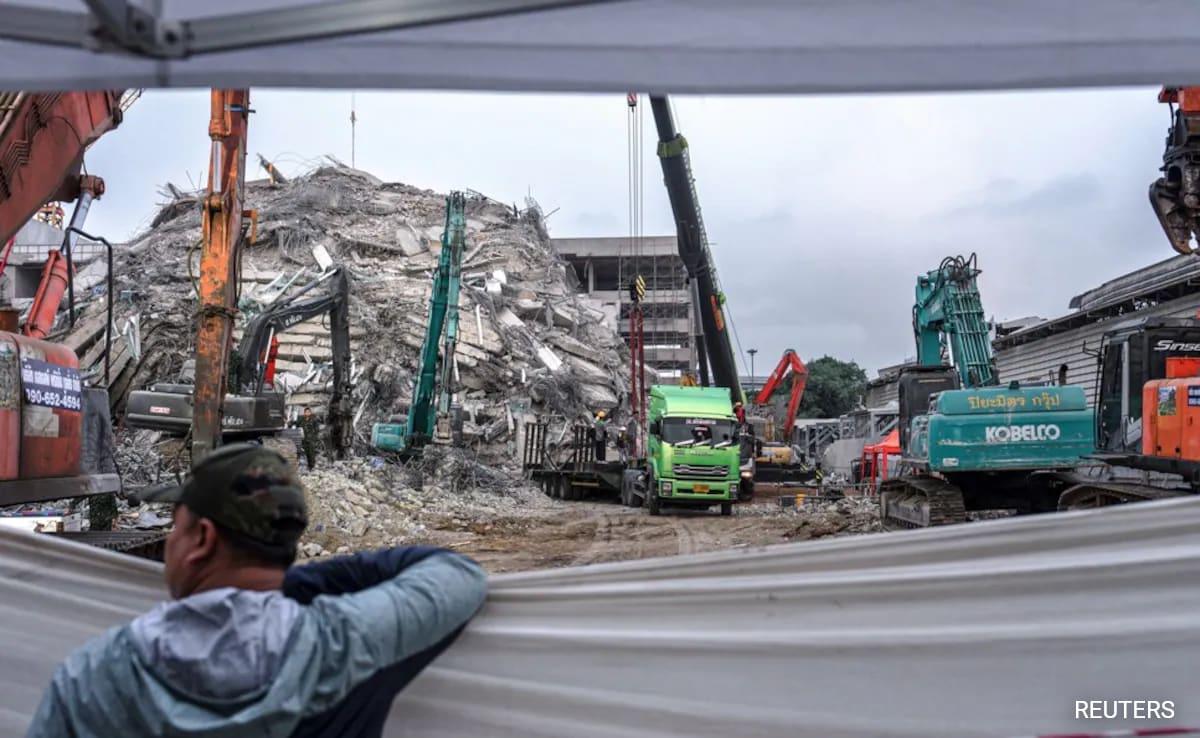Bangkok ‘s Tragedy: A Deadly Skyscraper Collapse Buries Hundreds
In a shocking turn of events, a recent report indicates that over 300 construction workers may be trapped under the rubble of a collapsed 30-story skyscraper in Bangkok, following a devastating 7.7-magnitude earthquake that struck nearby Myanmar last week. Although official estimates put the number of missing workers at 74, insider sources suggest that the real figure could be closer to 300 or even 400, leading to a state of distress and urgency in search and rescue operations.
The incident occurred shortly after a massive earthquake rocked Southeast Asia, which resulted in at least 2,000 fatalities. Authorities have been engaged in a frantic search for survivors, having extracted 13 bodies from the debris of the unfinished tower, which was commissioned by Thailand’s State Audit Office. This complex was being built by a joint venture between a Chinese firm and a Thai construction company. Rescuers are facing challenging conditions as they navigate through unstable structures to locate the trapped workers.
Eyewitness accounts and statements from unnamed local officials reveal that many of the workers buried in the wreckage are from Myanmar, a nation grappling with ongoing civil strife and economic hardship. “At least 50-60 people trapped in the rubble are Burmese,” said a local source. This influx of laborers seeking work in Bangkok highlights the dire economic conditions in their home country, exacerbated by years of turmoil following the military coup that displaced Aung San Suu Kyi’s government in 2021.
Understanding the Cause: Investigation Underway
In the wake of the disaster, Thai authorities have initiated an investigation into the Chinese-backed construction company responsible for the skyscraper. This incident marks a significant failure in structural integrity, as the skyscraper was the only building to completely collapse during the earthquake. Alarmingly, Thailand’s anti-corruption watchdog had previously flagged irregularities in the construction process, warning that the project may have involved corner-cutting practices.
Adding to the troubling situation, reports have emerged stating that tests conducted on materials retrieved from the collapse site revealed the presence of substandard steel. The materials are currently under further examination, with results anticipated in the coming week. Construction on the skyscraper commenced in 2020, but it had faced multiple delays and was only recently resumed following threats from the government to cancel the project.
In an alarming development, authorities apprehended four Chinese nationals associated with the construction company after they were caught attempting to remove critical documents from the construction site. This raises questions about transparency and accountability in the construction industry, particularly when it comes to safety standards.
Desperate Rescue Operations Continue
Search and rescue efforts have been ramped up, with the deployment of cutting-edge scanning devices and sniffer dogs at the site of the collapsed skyscraper. Bangkok’s Deputy Governor Tavida Kamolvej has confirmed that rescuers detected signs of life beneath the rubble but have struggled to access those areas due to the precarious nature of the debris.
Realistic chances of survival for those trapped begin to diminish after 72 hours, as stated by Kamolvej, who emphasized the urgency of the situation. “We have to speed up. We’re not going to stop even after 72 hours,” she reassured the public. This determination reflects the commitment of rescue workers who are risking their own safety to save lives during this monumental tragedy.
Meanwhile, similar rescue operations are ongoing in Myanmar, where rescuers successfully freed four individuals, including a pregnant woman and a young girl, from collapsed structures in the city of Mandalay, which is located near the epicenter of the earthquake.
The Bigger Picture: Implications and Consequences
This catastrophic event has far-reaching implications for the construction industry in Thailand and the region. The involvement of foreign companies and the increasingly competitive labor market in Southeast Asia make it essential to scrutinize safety regulations and labor conditions to prevent similar tragedies in the future. The plight of the workers, many of whom are from Myanmar, serves as a poignant reminder of the socio-economic challenges that permeate the region.
As the rescue operations unfold, communities in both Thailand and Myanmar are uniting in support for the affected workers and their families. Social media campaigns and local fundraising initiatives are mobilizing resources to aid those impacted by this disaster. The response from the public highlights the resilience and solidarity of the people during trying times.
For ongoing updates regarding the developments of this situation, readers can refer to Reuters and BBC News, both of which provide comprehensive coverage of the events unfolding in Bangkok and Myanmar. Additionally, for related content about the issues surrounding construction safety and labor rights, visit our articles on[Construction Safety Standards](#) and[Labor Rights in Southeast Asia](#).
As the situation develops, it remains crucial to ensure that accountability is enforced, and measures are taken to protect workers from the dangers of unsafe working conditions. The collective hope is to see a successful rescue and recovery, along with substantial changes to prevent future catastrophes. The events in Bangkok are not merely another news story; they are a call to action for all stakeholders involved in the construction and labor sectors to prioritize safety, integrity, and compassion.
DISCLAIMER
We have taken every measure to ensure that the information in this article and on our social media platforms is accurate, verified, and obtained from reliable sources. For feedback or complaints, please contact us at info@hamslive.com.


